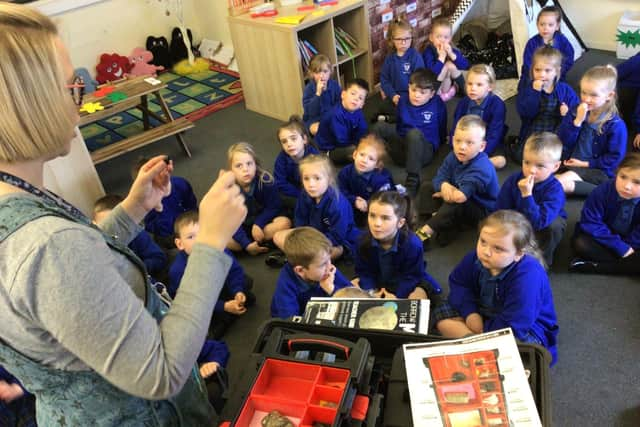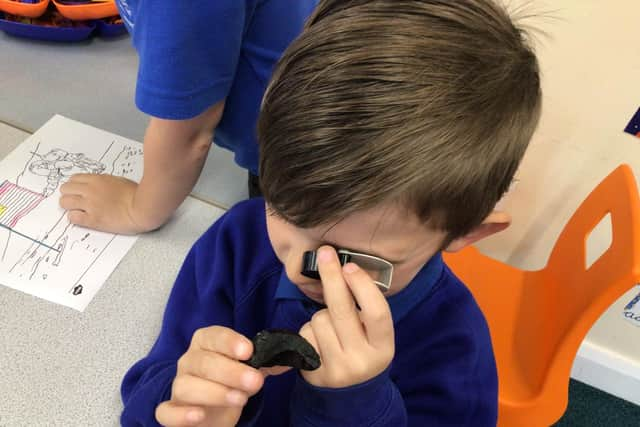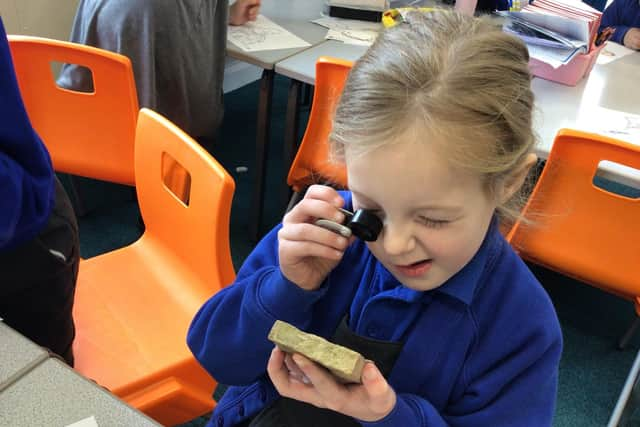Wigan pupils examine rare moon rock and meteorites formed billions of years ago
and live on Freeview channel 276
Children at St John’s CE Primary School in Abram were encouraged to reach for the stars and learn more about the universe during a week-long interactive experience of astronomy.
They were given the unique opportunity to touch a piece of space rock and allowed to handle genuine meteorites.
Advertisement
Hide AdAdvertisement
Hide Ad

These rare samples were provided by the UK’s Science and Technology Facilities Council (STFC), which provides educational packs to inspire young people to get involved in science and complement classroom studies.
The STFC pack includes a 1.2 billion-year-old piece of Mars rock and a 4.3 billion-year-old nickel meteorite. It is unlikely that pupils will ever get the chance to hold an object older than this, as Earth itself was formed 4.6 billion years ago.
The packs have been recently updated to include a new meteorite hunter’s kit, new teacher planning pack and new web-based resources and online support videos for all age groups in primary and secondary schools.
The lunar samples were collected in the late 1960s and early 1970s during some of NASA’s first manned space missions to the moon.
Advertisement
Hide AdAdvertisement
Hide Ad

During these missions, a staggering 382kg of material was brought back to Earth – mostly for use by scientists, but small quantities are used to develop educational packs like this one.
Samples like these can reveal a great deal about the planets from which they originate, but there is still much to learn – and STFC hopes these packs will encourage pupils to become the next generation of astronomers.
STFC’s executive chairman Prof Mark Thomson said: “We are thrilled to be able to offer this unique opportunity to young people.
"It is not often they will be able to see close up, and actually touch, such important fragments of science history.


